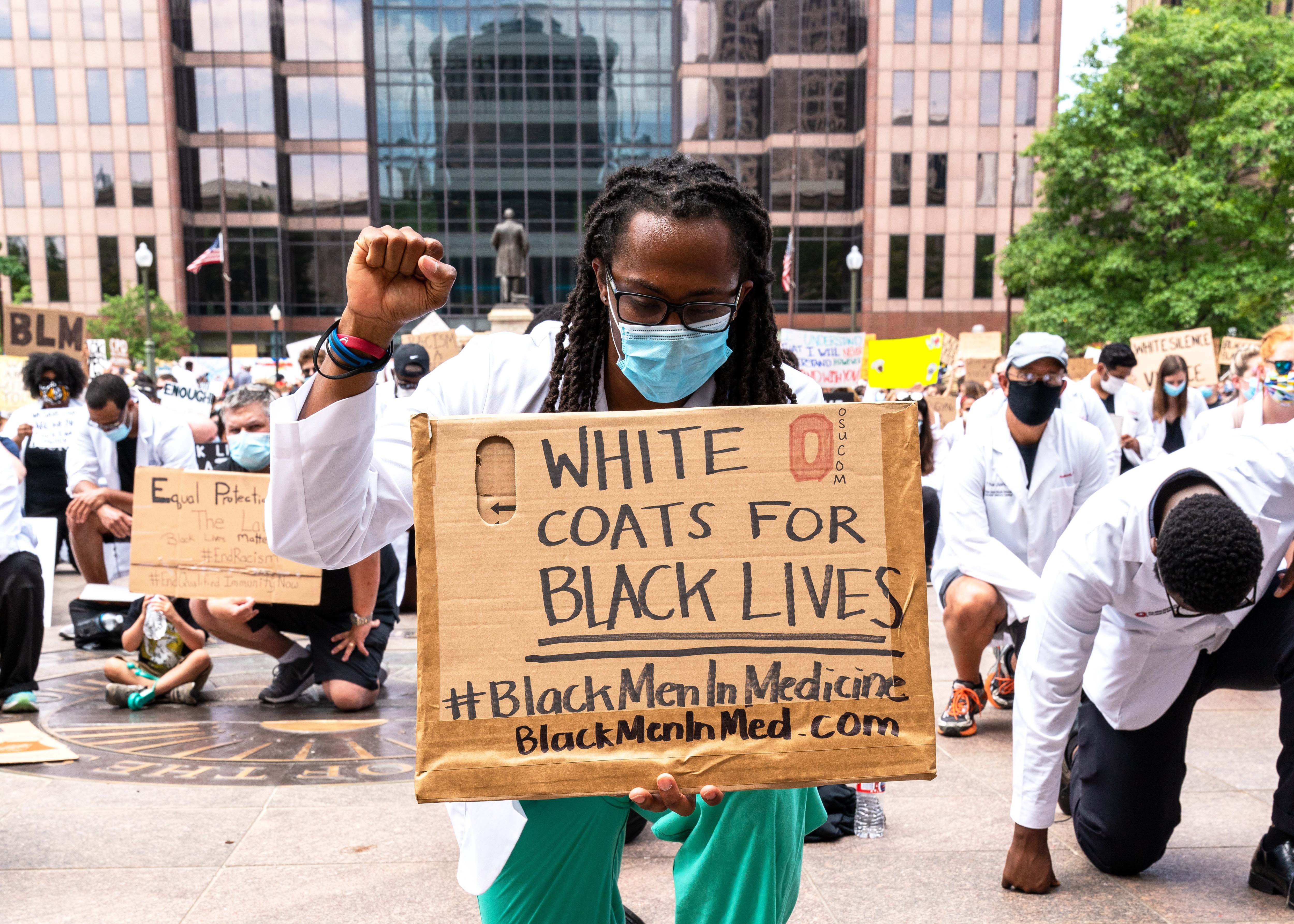
Teri Dashfield photographed the movement for an increased recruitment of Black people in medicine with “Black Men in Medicine”. Credit: Courtesy of the Greater Columbus Arts Council
Artistry and activism shed light on the fight against racial inequalities in Columbus with the #ArtUnitesCbus Film and Photography exhibition of the Greater Columbus Arts Council.
In response to the death of George Floyd and the resulting protests, the GCAC employed Columbus-based visual artists to express themselves and paint murals throughout the city. The #ArtUnitesCbus Film and Photography exhibition showcases some of the best pieces from the more than 200 murals created throughout the city this summer.
In October 2020, an #ArtUnitesCbus Film and Photography award was created, and 12 recipients were designated. This award provided cash — $1,000 for each photographer and $5,000 for each filmmaker — for them to approach and depict the Columbus protests last summer through an artistic and socially conscious lens. Their work is now viewable at the community art center of the GCAC at 182 E. Long St. through May 7 and the Wexner Center for the Arts website until Friday.
The nine photographers “self-selected” themselves by choosing two of their best pictures, allowing the gallery to display 18 works, Jami Goldstein, vice president of marketing, communication and events at the GCAC, said.
Emphasizing the importance of creating a flexible environment for the artists within this exhibition, Goldstein said no curator was designated to the project.
“The purpose of our gallery is to represent work by historically marginalized communities,” Goldstein said. “And I think that, again, the message here is the story of this moment told by Black creative voices through their lens and their experiences. And that’s what makes it so powerful.”
The three filmmakers were also allowed freedom throughout the creation process. The panel of films includes one dramatic narrative and two documentaries. Donte Woods-Spikes is one of the filmmakers and created the documentary “As a Matter of Black.”
Woods-Spikes said he chose this title to stress that Black people can feel the weight of scrutiny and hypocrisy in the public sphere.
“When something happens, especially when it comes to injustices, there’s always a Black person that’s involved. And there’s a lot of back and forth: ‘What were they doing? Why did it happen? What’s their history? What’s their past?’ All these questions come up when it’s a Black person,” Woods-Spikes said. “Instead of waiting for the facts, doing background checks, let’s just be completely honest — it is because it’s a Black person. So let’s forget the facts and just recognize it is a matter of Black.”
Woods-Spikes said he didn’t consider himself an artist before being selected for the exhibition, despite his passion for video. He said he was particularly active last summer, recording key moments of the protests — in particular, the removal of the Christopher Columbus statue — and interviewing friends or unknown people.
“I just thought that was a monumental moment that needed to be documented,” Woods-Spikes said.
“As a Matter of Black” displays footage of the protests and interviews with members of the Black community. Woods-Spikes said the film mostly showcases what is going on behind the scenes.
“What happens when we all go back home? What happens when the artists and activists connect with each other?” Woods-Spikes said. “And they both come from completely different worlds. But they put their ideas and their skills together, and they create something.”
One of his interviewees is Adrienne Hood, one of several mothers to lose a child to injustice. With the help of artist Richard “Duarte” Brown, Woods-Spikes said Hood organized a night of healing for families in order to properly mourn their loved ones together.
Woods-Spikes said this night is a strong example of community support and reappropriation. When a tragic event happens, he said the media broadcasts it and officials talk about it for their own benefit; that can lead to a sense of dispossession inside the grieving family.
“There’s no story more powerful than someone’s own story,” Woods-Spikes said.


